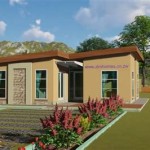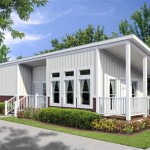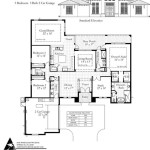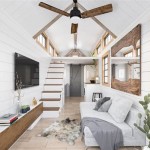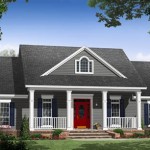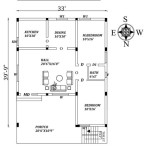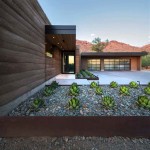Craftsman Mountain Cottage House Plans: A Guide to Design and Construction
Craftsman Mountain Cottage house plans represent a synthesis of two distinct architectural styles: the rugged, natural aesthetic of mountain homes and the detail-oriented craftsmanship of the Craftsman movement. This fusion results in dwellings that are not only aesthetically pleasing but also highly functional, blending seamlessly with their natural surroundings. Characterized by specific design elements and construction techniques, these plans offer a unique option for those seeking a comfortable and visually appealing home in mountainous regions.
The integration of Craftsman design principles with the structural requirements of mountain terrain presents unique challenges and opportunities. Considerations such as steep slopes, heavy snow loads, and the availability of local materials play a significant role in shaping the final design. Understanding the key elements that define both Craftsman and Mountain styles is crucial for appreciating the nuances of these house plans.
Key Elements of Craftsman Design
Craftsman architecture, popularized in the early 20th century, emphasizes simplicity, natural materials, and handcrafted details. This style rejects the ornate embellishments of Victorian architecture in favor of clean lines and functional design. Key features commonly found in Craftsman homes include:
Low-Pitched Roofs:
Craftsman homes typically feature low-pitched gable or hipped roofs with wide eaves. These overhanging eaves provide protection from the elements and create a sense of shelter and stability.Exposed Rafter Tails:
The rafter tails, which are the ends of the roof beams that extend beyond the walls, are often left exposed and decorative, adding a touch of visual interest to the roofline.Wide Front Porches:
A welcoming front porch is a hallmark of Craftsman design. These porches are often supported by substantial columns, frequently tapered or set on stone piers, providing a space for outdoor relaxation and socializing.Natural Materials:
Craftsman homes prioritize the use of natural materials such as wood, stone, and brick. These materials are often left exposed to showcase their natural beauty and texture. Wood siding, shingle siding, and stone foundations are common features.Detailed Woodwork:
Interior woodwork is a key element of Craftsman design. This includes features like built-in cabinetry, wainscoting, and window and door trim. The woodwork is typically simple but well-crafted, emphasizing the natural grain and texture of the wood.Open Floor Plans:
While not always the rule, Craftsman homes often incorporate open floor plans to create a more spacious and airy feel. This allows for better flow between living spaces and encourages a sense of connection within the home.Abundant Windows:
Craftsman homes typically feature a generous number of windows to provide natural light and ventilation. Windows are often double-hung or casement style with simple grids or divided lites.Characteristics of Mountain Home Design
Mountain home design focuses on functionality and adaptability to the unique challenges presented by mountainous environments. These homes are often designed to withstand harsh weather conditions and blend seamlessly with the natural landscape. Key elements of mountain home design include:
Durable Materials:
Mountain homes often utilize durable, weather-resistant materials such as stone, wood, and metal. These materials are chosen for their ability to withstand harsh weather conditions, including heavy snow loads, strong winds, and temperature fluctuations.Steep Roof Pitches:
Steep roof pitches are common in mountain homes to facilitate snow shedding and prevent the accumulation of heavy snow loads. This is crucial for structural integrity in areas with significant snowfall.Large Windows and Decks:
Mountain homes often feature large windows and decks to take advantage of the scenic views and natural light. These outdoor spaces provide opportunities for residents to connect with the surrounding landscape.Natural Stone Accents:
Natural stone is often used for foundations, chimneys, and exterior cladding to create a rustic and durable aesthetic that blends with the surrounding environment.Emphasis on Energy Efficiency:
Energy efficiency is a key consideration in mountain home design due to the often harsh climate and high heating costs. Features such as insulation, high-efficiency windows, and passive solar design are commonly incorporated.Adaptation to Sloping Sites:
Mountain homes are often built on sloping sites, requiring careful planning and design to minimize site disturbance and maximize usable space. Techniques such as terracing, retaining walls, and daylight basements are commonly used.Consideration of Views:
Mountain homes are designed to maximize views of the surrounding landscape. This often involves strategically positioning the home on the site and incorporating large windows and decks that frame the views.Integrating Craftsman and Mountain Styles
Craftsman Mountain Cottage house plans effectively blend the design elements of both styles, resulting in homes that are both aesthetically pleasing and functionally suited for mountain living. This integration involves careful consideration of materials, design details, and site planning.
Material Selection:
The choice of materials is crucial for creating a cohesive design. Craftsman Mountain Cottage plans often utilize natural materials such as wood, stone, and metal in a way that evokes both the rustic charm of mountain homes and the handcrafted quality of Craftsman design. For example, a home might feature wood siding with stone accents, exposed rafter tails, and a large front porch with stone columns.Roof Design:
Roof design is another key element in integrating the two styles. A Craftsman Mountain Cottage plan might feature a low-pitched gable roof with wide eaves, as is typical of Craftsman design, but with a steeper pitch to accommodate heavy snow loads, as is typical of mountain homes. The roof might also incorporate details such as exposed rafter tails and decorative brackets.Interior Design:
Interior design is equally important in creating a cohesive Craftsman Mountain Cottage aesthetic. This often involves incorporating natural materials such as wood and stone into the interior finishes, along with handcrafted details such as built-in cabinetry, wainscoting, and window and door trim. Open floor plans are also common, creating a sense of spaciousness and connection within the home.Site Planning:
Careful site planning is essential for ensuring that the home blends seamlessly with its natural surroundings. This involves minimizing site disturbance, utilizing natural landscaping, and positioning the home to take advantage of views and natural light. Techniques such as terracing and retaining walls may be used to create usable outdoor spaces on sloping sites.Energy Efficiency:
Energy efficiency is a key consideration in Craftsman Mountain Cottage design. This involves incorporating features such as insulation, high-efficiency windows, and passive solar design to minimize energy consumption and reduce heating costs. The use of sustainable materials and construction techniques can also contribute to energy efficiency.Examples of Integrated Design Elements:
A typical Craftsman Mountain Cottage might feature a stone foundation, wood siding, a low-pitched gable roof with wide eaves and exposed rafter tails, a large front porch with stone columns, and large windows to take advantage of the views. The interior might feature wood floors, exposed wood beams, built-in cabinetry, and a fireplace with a stone surround.Adaptation to Local Conditions:
It is essential to adapt the design to the specific local conditions of the building site. This includes considering factors such as climate, topography, and availability of materials. For example, in areas with heavy snowfall, the roof pitch may need to be steeper than in areas with less snowfall. The choice of materials may also be influenced by local availability and cost.Customization:
Craftsman Mountain Cottage house plans can be customized to meet the specific needs and preferences of the homeowner. This might involve modifying the floor plan, adding or removing features, or changing the materials used in construction. Working with an architect or designer can help homeowners create a plan that is perfectly suited to their individual needs and tastes.The appeal of Craftsman Mountain Cottage house plans lies in their ability to combine the timeless charm of Craftsman design with the rugged beauty of mountain living. These homes offer a unique blend of comfort, functionality, and aesthetic appeal, making them a popular choice for those seeking a distinctive and sustainable home in a mountainous setting.
The careful selection of materials, design elements, and site planning techniques is crucial for creating a successful Craftsman Mountain Cottage. By understanding the key principles of both styles and adapting them to the specific local conditions, homeowners can create a home that is both beautiful and functional, a true reflection of their individual lifestyle and connection to the natural world.

3 Bedroom Craftsman Cottage House Plan With Porches

Craftsman House Plans Style

Craftsman Cottage House Plan 117 1102 4 Bedrm 2482 Sq Ft Home

3 Bedroom Craftsman Cottage House Plan With Porches

Mountain House Plans By Max Fulbright Designs

Mountain House Plans By Max Fulbright Designs

Beautiful Craftsman Style Mountain House Plan 7450 Blowing Rock

3 Bedroom Craftsman Cottage House Plan With Porches Plans Style Porch
:max_bytes(150000):strip_icc()/whisper-creek-b65299d0def24eb28d88f38f7581e118.jpg?strip=all)
34 Best Mountain House Plans For Your Vacation Home

Mountain Cottage 18700ck Architectural Designs House Plans

